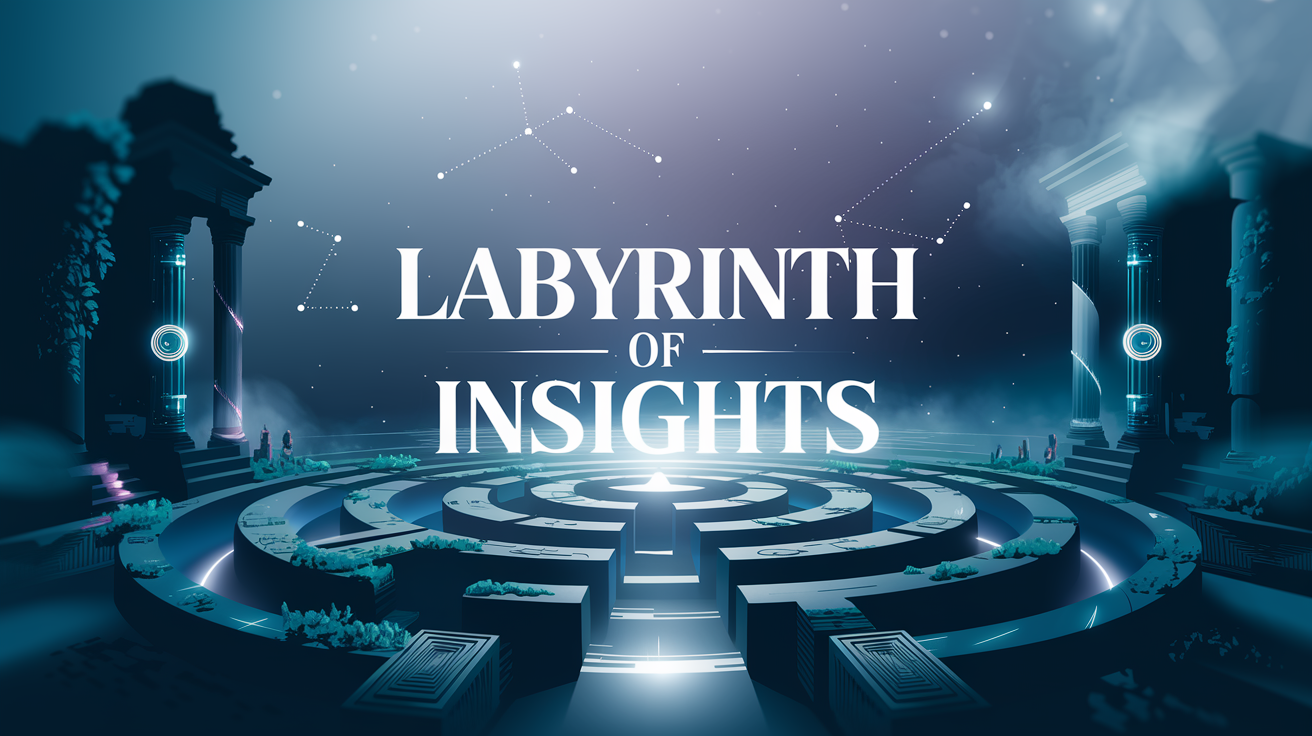
This diagram, developed as part of Utopian Focus’s Labyrinth of Insights (Research & Development secret lab, let’s put it this way), serves as a conceptual framework to explore the interplay between self-awareness, creativity, adaptability, and interaction. It is a philosophical yet practical tool designed to guide artistic, entrepreneurial, and strategic workflows.
Overview
The diagram is divided into two key components: the Inner Circle and the Outer Circle, each addressing distinct but interconnected layers of value creation. Together, they represent a dynamic system that integrates identity, external engagement, and resilience through time and equanimity (Upekkha).
Inner Circle: “Know Thyself”
The inner circle represents the essence of personal identity—the fingerprint of the soul. It focuses on uncovering and understanding our unique patterns, which serve as the foundation for all external endeavors.
Key Aspects:
• Desire and Aversion: Understanding what drives or repels us, shaping our goals and choices.
• Action and Inaction: Reflecting on how we respond to opportunities or challenges, and recognizing when to act or pause.
• Knowledge and Ignorance: Acknowledging the boundaries of our awareness and striving to expand them.
• Access to Insight: Cultivating moments of clarity, intuition, or wisdom as guiding forces.
This circle anchors the individual in self-awareness, ensuring that all outward actions align with their core identity and purpose.
Outer Circle: Interaction with the World
The outer circle expands upon the inner identity, outlining how individuals and organizations engage with their environment. It is divided into four quadrants, each representing a stage of external interaction:
1. Discovery:
The process of exploring, curating, and creating knowledge or ideas.
• Libraries: Accumulation of resources or inspirations.
• Curators: Organizing and interpreting raw material.
• Creators: Innovators who transform knowledge into form.
• Creations: Tangible outcomes that hold value.
2. Adaptation:
The art of transformation, requiring balance between opposing forces.
• Reproduction/Elimination: Deciding what to replicate or discard.
• Union/Separation: Blending or isolating concepts for refinement.
• Distortion/Consistency: Experimenting with boundaries while maintaining coherence.
• Rules/Entropy: Balancing structure with the natural chaos of innovation.
3. Exchange:
How ideas, products, and messages flow outward to engage with others.
• Interactions: Points of contact with audiences or collaborators.
• Pertinence: Ensuring relevance to the context or needs.
• Reach: Extending influence or accessibility.
• Conversion: Transforming interactions into meaningful outcomes.
4. Security:
The safeguard of identity and value in a dynamic environment.
• Detection: Awareness of potential risks or disruptions.
• Labeling: Categorizing and understanding challenges or opportunities.
• Antidotes: Developing solutions or preventive measures.
• Boundaries: Establishing clear limits to protect resources or identity.
The Unifying Elements: Time and Upekkha
At the center of this framework lies the recognition of impermanence (time) and the cultivation of Upekkha (equanimity). Together, they ensure balance and resilience, enabling individuals and organizations to act with clarity and adaptability, regardless of external circumstances.
• Time: Acknowledging the inevitable flow of events and changes, shaping decisions and priorities.
• Upekkha (Equanimity): A state of calm acceptance, allowing for thoughtful, deliberate action in moments of challenge or uncertainty.
Applications in Research & Development
This diagram has become a cornerstone of Utopian Focus’s creative and strategic processes. It offers:
1. A Framework for Decision-Making: Breaking complex challenges into manageable layers.
2. A Guide for Innovation: Balancing discovery, adaptation, and security within a constantly changing environment.
3. A Tool for Alignment: Ensuring all projects and outputs resonate with the core identity of the studio and its collaborators.
4. Versatility: It has been successfully applied to diverse areas, including artistic workflows, entrepreneurial strategies, and philosophical explorations.
A Note on Its Nature: The Map is Not the Territory
As with any framework, this diagram is a representation, not reality itself. It serves as a guide—a flexible system to inspire thought and action rather than a rigid prescription. By keeping this principle in mind, the diagram becomes a living, adaptable tool for continual growth and evolution.
